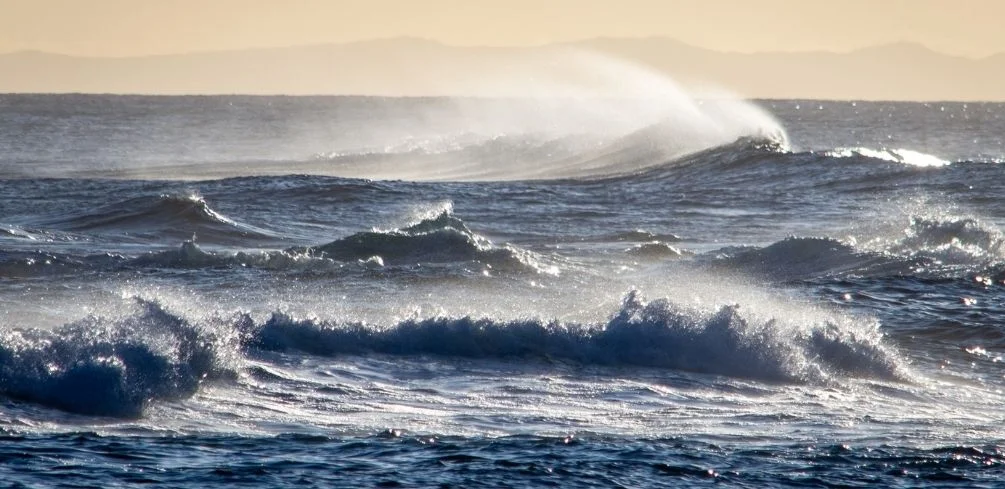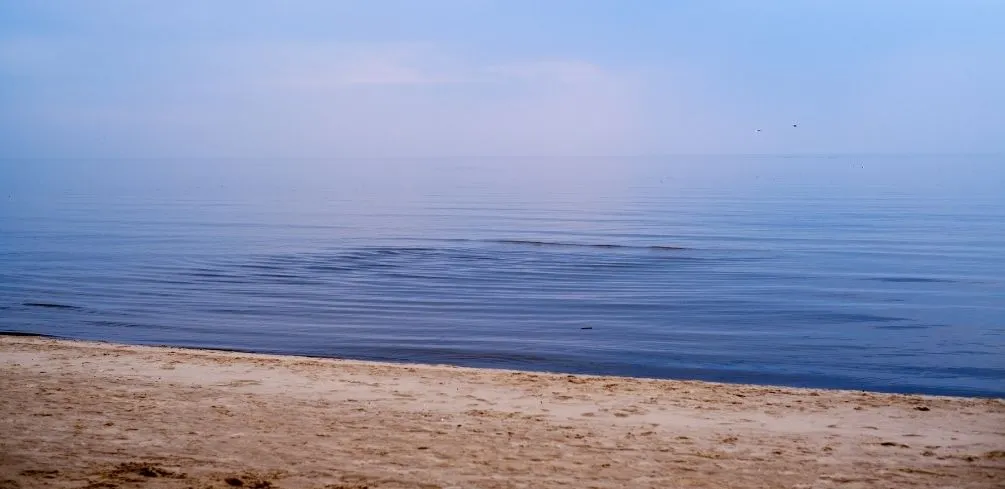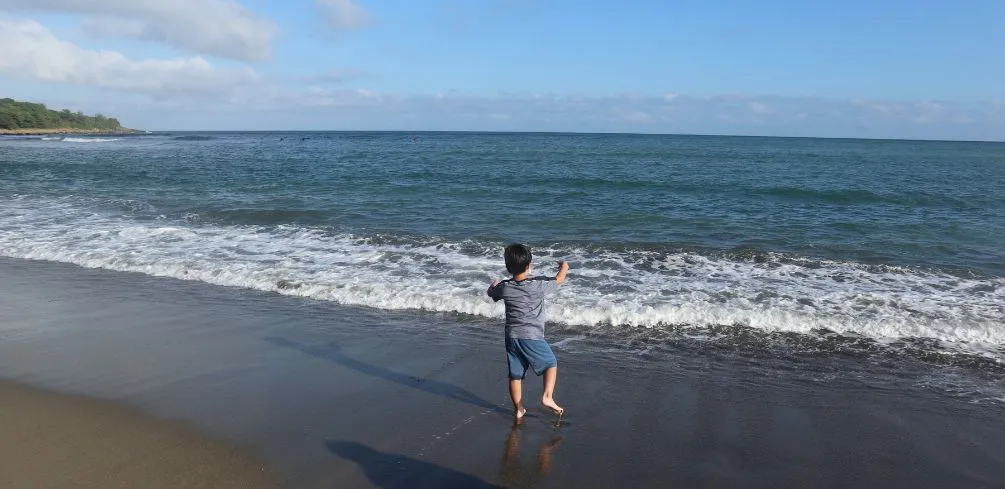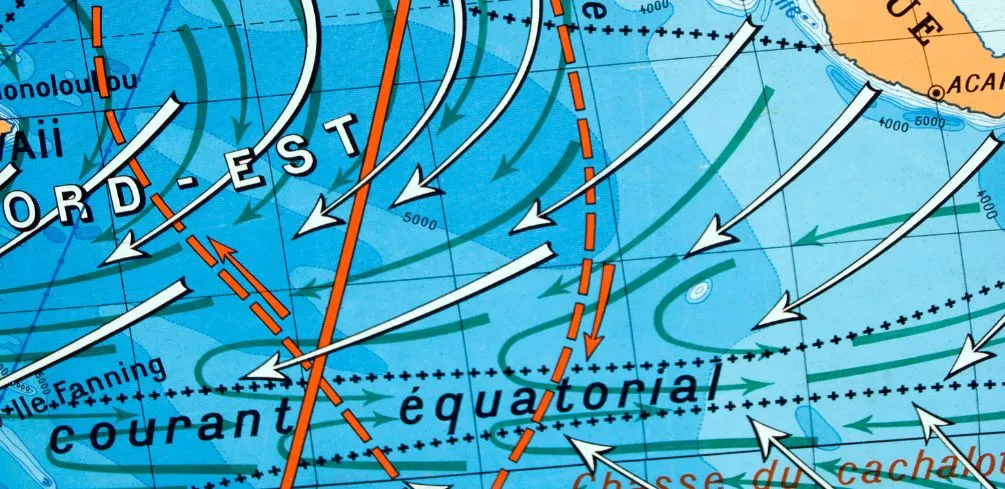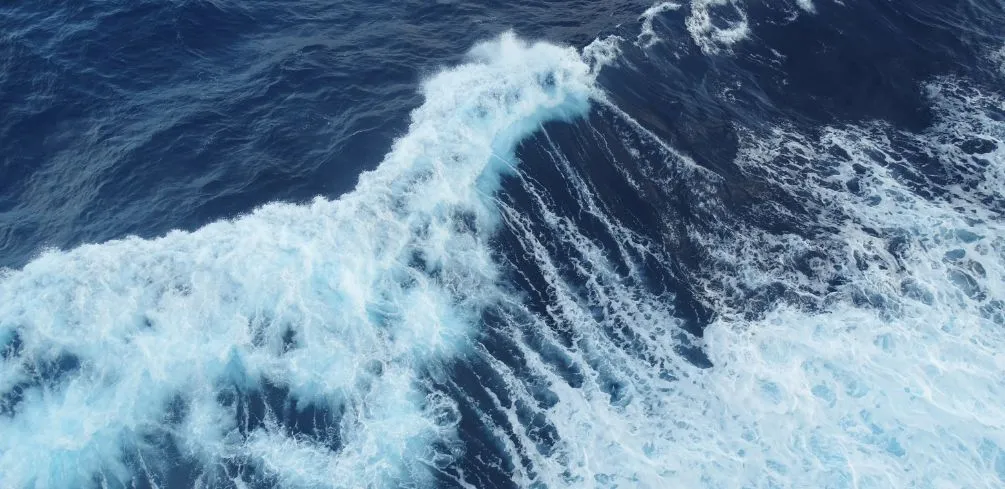You’re trying to go fishing, take a boat out sightseeing, or snorkel over the weekend but the weather forecast indicates the ocean has 3′ – 5′ waves. How bad are 3′-5′ seas?
Let’s take a look at how ocean weather forecasts work, what different-sized waves do to boats, and what rules you should follow to ensure your personal safety during rough weather on the open ocean.
How Bad Are 3-5 Foot Seas?
The size of your boat will determine how bad different sizes of waves feel. 3-5 foot seas aren’t fun in small watercraft. While you’ll probably be safe in a little 20′ boat, you’ll have a long, rough ride that will be fairly unpleasant. Experienced boaters often follow a simple rule when it comes to ocean chop: for every 1′ of waves, you want 10′ of boat.
Things To Consider In Your Marine Forecast
While you’re better off being safe than sorry, the raw wave height prediction can sometimes be misleading. There are a lot of other factors that you should look at in the marine forecast that can affect how the ocean feels.
Here are some of the other factors you should look at when attempting to decide if you should go out on the water.
Wind Speed
More than anything else, the wind speed should be the factor that you look at to determine how rough the sea will feel. Winds of 10 to 15 knots correspond to 2-3 foot seas, while a 15-20 knot wind indicates you’ll get 3-5 feet of waves. 20-25 kts (knots) usually means 4′-6′ of the wave, while “variable” winds almost always indicate a smooth, calm ocean.
If the wind speed matches up with the wave height prediction, you don’t need to look into things too deeply. 17 kt winds paired with 3′-5′ of waves means you should take the wave height at face value.
When things get mismatched, however, there’s a good chance that either something is inflating the wave height or that the sea hasn’t caught up to the rough wind.
Factors like leftover choppiness from previous weather and long, gentle swells from storm activity often inflate the wave height readings. In both cases, you’ll get much flatter, more pleasant seas than the forecast would indicate.
Experienced fishermen suggest trusting the wind, not the wave height. This means that if your boat is comfortable in 3′-5′ seas, you’re usually good to go out in anything with less than 20 kt winds.
Wave Period
The other important number is the wave period or the average time between each swell. There’s a big difference between 3-5 foot seas with a wave period of 12 seconds and 3-5 foot seas with a wave period of 6 seconds.
The first thing to consider is comfort: a longer wave period means less bouncing up and down, as the waves are less frequent. Most boat captains are much warier of a rough sea with a short wave period than they are of a similarly rough sea with a longer gap between each wave
That said, some experience captains will go out when the forecast suggests that there will be big waves and a short period. Short-period waves are caused by immediate wind activity, while long-period waves are a result of the long-term effects of wind.
This means that if you think the wind will die down before or during your boating excursion, a rough forecast with short period waves doesn’t mean much. It’s very likely that the sea will die down quickly and be quite pleasant to sail on.
Offshore Forecast
Finally, look at the offshore forecast carefully. The offshore forecast covers the weather you’ll experience between 20 and 250 miles of shore, so it’s often not super relevant for your journey, but it’s definitely a good metric to check if you intend to venture farther out.
Be sure to temper the numbers with your intended route and factor them in accordingly. If you intend to go out about 15 miles from shore, for example, expect the conditions you encounter to be a blend of 80% onshore forecast numbers and 20% offshore forecast numbers.
The farther out you go, the more you should consider the offshore forecast.
Are 2-3 Foot Seas Bad?
For snorkeling, canoeing, or sailing in a tiny catamaran, even 2′-3′ of chop can feel rough. The rule of thumb mentioned above still applies: for comfort, you want 10′ of the vessel for every 1′ of the wave.
Before embarking into choppy water, consider your level of experience with your vessel of choice and how easy it is to turn around and go back to shore.
You’re probably embarking on your small vessel for fun, so there’s no shame in turning back and going out on a different day if you think you’d spend the whole afternoon being buffeted about by big waves.
Should I Cancel My Party Boat Fishing Trip Over Big Waves?
If you’re considering embarking on a commercial fishing tour and the weather forecast looks rough, talk to your captain! Your party boat captain will be keeping a close eye on the weather and knows the limits of their vessel inside and out.
Their goal will be the comfort and safety of everyone on board, so they’ll probably cancel the trip themselves if they think that the waves will be too big for people to have fun.
If you have problems with seasickness or you’re otherwise skeptical of your ability to handle larger waves, the captain will be able to offer more insight into how different sizes of waves feel in their vessel.
After getting an idea of what the forecast means for the boat you’re going to take, you can make an educated decision about whether or not you should cancel your trip.
Safety First
Weather conditions can change quickly and unexpectedly. While the suggestions above can help you find a few extra opportunities for pleasant boating on manageable waters, you should always exercise caution and stick to your personal comfort and safety minimums.
It is far preferable to be on land wishing you were boating than 10 miles offshore wishing you were on land. If conditions seem like they’re on the fence, exercise caution and have a plan to turn around if things get too rough.
You can always go boating on a different day.
